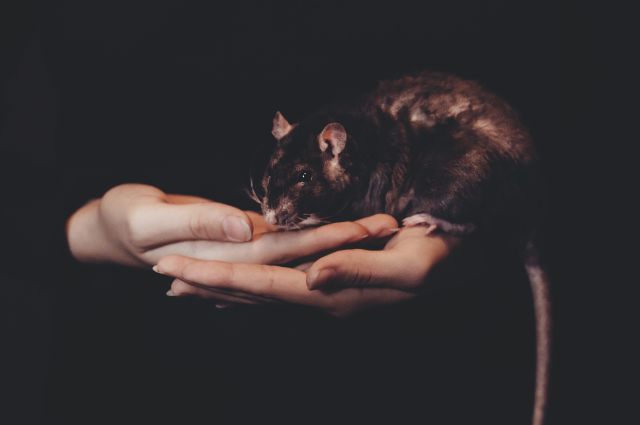
Photo by Freestocks on Unsplash
World Zoonoses Day, observed on July 6th each year, sheds light on the intricate web connecting animals and humans through diseases. Zoonoses, infectious diseases that can be transmitted between animals and humans, have been a constant companion throughout history. This day serves as a reminder of the need for global collaboration to prevent, control, and mitigate the impact of these diseases.
The Origins of World Zoonoses Day
World Zoonoses Day commemorates the day in 1885 when Louis Pasteur successfully administered the first vaccine against rabies, a zoonotic disease. This groundbreaking event marked a pivotal moment in understanding and combating diseases that traverse the animal-human boundary.
The Interconnected Nature of Zoonoses
Zoonotic diseases encompass a diverse range, from the well-known rabies and influenza to emerging threats like COVID-19. The interconnectedness of ecosystems and human-animal interactions contribute to the transmission of these diseases. Deforestation, climate change, and increased globalization further amplify the risk of zoonotic spillover.
One Health Approach
The World Zoonoses Day emphasizes the importance of the One Health approach, recognizing the interconnectedness of human, animal, and environmental health. Collaborative efforts among veterinarians, medical professionals, ecologists, and policymakers are crucial for preventing and managing zoonotic outbreaks. This holistic approach considers the complex web of interactions between humans, animals, and the environment.
Global Challenges and Emerging Threats
The 21st century has witnessed the emergence of novel zoonotic diseases, such as SARS, MERS, and COVID-19. These outbreaks underscore the need for robust surveillance systems, rapid response mechanisms, and international cooperation to detect and contain threats at an early stage.
Preventive Measures
Preventing zoonotic diseases requires a multi-faceted approach. This includes monitoring wildlife health, implementing vaccination programs for both animals and humans, promoting responsible farming practices, and raising awareness about the risks associated with the wildlife trade.
Role of Technology and Research
Advancements in technology, including genomics and data analytics, play a crucial role in understanding the dynamics of zoonotic diseases. Research initiatives focused on identifying potential reservoirs, studying transmission pathways, and developing effective treatments are vital for mitigating the impact of these diseases.
Challenges in Implementation
While the One Health approach is widely acknowledged, its implementation faces challenges such as resource constraints, lack of coordination among different sectors, and the need for policy frameworks that support collaborative efforts. Addressing these challenges is essential for building resilient systems capable of tackling the complex nature of zoonotic threats.
The Economic Impact of Zoonoses
Beyond the immediate health implications, zoonotic diseases also exert a substantial economic toll. Outbreaks can disrupt agricultural systems, trade, and tourism. The cost of responding to and recovering from these events places a burden on economies, particularly in developing nations where healthcare infrastructure may be less robust.
Community Engagement and Education
World Zoonoses Day encourages community engagement and education as fundamental components of disease prevention. By fostering an understanding of zoonotic risks and promoting responsible practices, communities can actively contribute to breaking the transmission cycle of these diseases.
Addressing Wildlife Conservation
Preserving biodiversity and habitats is integral to preventing zoonotic spillovers. Deforestation and encroachment into natural habitats bring humans into closer contact with wildlife, increasing the likelihood of disease transmission. Sustainable conservation practices are essential for maintaining the delicate balance of ecosystems.
Policy Implications
Effective policies are crucial in the fight against zoonoses. Governments worldwide need to implement and enforce regulations that promote responsible farming, monitor wildlife trade, and facilitate collaboration between health and environmental sectors. International cooperation is paramount to address challenges that transcend borders.
Lessons from Recent Outbreaks
Recent zoonotic outbreaks, notably the COVID-19 pandemic, underscore the need for a proactive rather than reactive approach. Investments in research, surveillance infrastructure, and global cooperation are vital for early detection and containment of emerging diseases before they escalate into widespread crises.
Research and Development for Vaccines
The development of vaccines for zoonotic diseases is a critical aspect of preventive measures. Investing in research and development for vaccines not only protects human populations but also contributes to the health and well-being of animals, breaking the cycle of transmission at its source.
Building Resilient Health Systems
Strengthening health systems is paramount in responding to zoonotic threats. This includes enhancing diagnostic capabilities, ensuring an adequate supply of medical resources, and training healthcare professionals in recognizing and managing zoonotic diseases.
The Role of International Organizations
International organizations such as the World Health Organization (WHO), the World Organisation for Animal Health (OIE), and the Food and Agriculture Organization (FAO) play a crucial role in coordinating global efforts. These organizations facilitate information exchange, provide technical assistance, and establish guidelines for tackling zoonotic challenges.
Conclusion
World Zoonoses Day serves as a call to action, urging individuals, communities, and nations to work together in preventing and managing zoonotic diseases. Recognizing the interconnectedness of all living beings is crucial for building a sustainable and resilient global health system. As we navigate the complex landscape of zoonoses, collaboration, and a united front are our strongest allies in safeguarding the health of both animals and humans.
It serves not only as a moment of reflection but as a catalyst for sustained action. As the world grapples with ongoing and future zoonotic threats, a collaborative, interdisciplinary approach remains the linchpin of effective prevention and control. By recognizing the shared responsibility to safeguard the health of our planet, we pave the way for a future where the risk of zoonotic diseases is minimized, and the delicate balance between humans, animals, and the environment is preserved.
